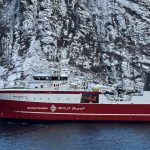According to the news a community development quota group representing 20 Southwest Alaska communities will start a new $35 million salmon processing facility in June in Platinum. It si told that this new plant will be financed by the group’s lucrative profits in Bering Sea pollock fisheries. CVRF officials said they anticipate the new plant will operate at a deficit for up to five years. Still it will make CVRF the third largest employer in the region, where fisheries – which include salmon, halibut, crab, but mainly pollock – are critical to the economy.
“Pollock provides” is the mantra of this CDQ group, which represents 8,700 residents living in the 20 villages in the Bristol Bay region. CVRF said that to emphasize the importance of pollock to the region, it has produced a 16-page catalog for area resident that is filled with information about all the harvesting, processing and related jobs in the region.
For this plant CVRF offers a number of fisheries-related training opportunities, including carpentry, electrical, heavy equipment operation, welding, plumbing, certified nurse assistant and marine licensing. CVRF officials emphasized in a note in the front of the catalog that the money for all these benefits comes from the Bering Sea groundfish fisheries, and primarily from pollock.
It is opined that there was insufficient socio-economic data about the CDQ program and the scope of its impact on Western Alaska, including non-CDQ member communities. He also said data about the CDQ program with respect to the level of Western Alaska ownership in the Bering Sea and Aleutian Islands pollock fishery was outdated. Chinook bycatch limit alternatives for the CDQ program penalize the region’s clear fishing history and may violate the federal CDQ statute.








